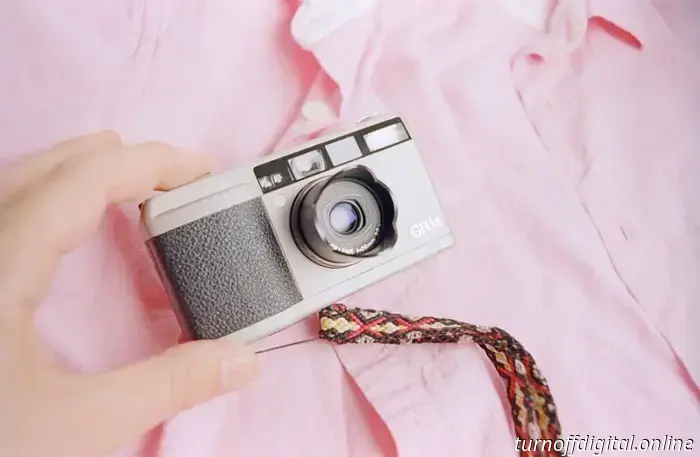
The Ricoh GR1s, an enhancement over the original Ricoh GR1, is a high-end film point-and-shoot camera equipped with a sharp 28mm f2.8 lens, housed in a lightweight, pocket-sized magnesium alloy body, showcasing some of the finest technological advancements of the mid-1990s. These cameras were tailored for consumers desiring top-tier features and build quality akin to premium devices like the renowned Contax T-series, all while being more affordable by several hundred dollars. In this review, I will thoroughly explore the Ricoh GR1s’ features, construction quality, lens performance, and the practicalities of purchasing, using, and owning this camera. Additionally, I will briefly compare my GR1s to the original model in the series, the GR1, and juxtapose it with the world’s smallest full-frame camera, the Minolta TC-1. Furthermore, I will address typical problems (such as a faulty shutter button, degrading seals, and absent LCD segments) and recount my experiences in remedying these issues.
In this review: specifications of the Ricoh GR1s, comparison with the world’s thinnest camera, GR1 versus GR1s, other Ricoh GR point-and-shoot models, film loading in Ricoh GR cameras, controls, autofocus features, flash usage, viewfinder details, design and ergonomics, evaluation of the Ricoh GR 28mm f2.8 lens, build quality of the GR1/GR1s, common issues, repair and maintenance insights, price justification, and where to acquire a functioning Ricoh GR1. Support this blog by considering a GOLD membership for premium features!
**Ricoh GR1s Specifications:**
- Released: 1998.
- Launch Price: $800.
- Lens: GR Lens 28mm f2.8-22 (7 elements in 4 groups) featuring multi-coating and aspherical lenses.
- Focus Range: 0.35m/1.1’ to infinity.
- Focusing: Passive multi-autofocus or single-point autofocus with focus lock, alongside fixed-focus “Snap” and “Infinity” modes. Automatic auxiliary AF light for low-light settings.
- Viewfinder: Reverse Galilean type with backlit LCD frame illumination in low light. Coverage: 81% vertically and 83% horizontally, with a magnification of 0.43x.
- Shutter: Electronic leaf-type shutter operating from 2s to 1/500s (aperture priority mode can only fire at 1/500s with aperture set to f16).
- Exposure: Full auto “Program” mode or aperture-priority with -2 to +2 EV compensation (in half-stops). ISO film speeds set via DX-code reader, ranging from 25-3200, defaulting to ISO 100. Automatic flash for backlit subjects up to 3m/9’10”.
- Flash: Guide Number 7 (ISO 100) with a charge time of approximately 5s.
- Battery: 3V CR2, lasting around 300 shots with 50% flash usage.
- Chassis: Diecast magnesium alloy. Dimensions: 117mm × 61mm × 26.5mm (4.6” × 2.4” × 1”) excluding grip. Weight: 180g/6.2oz.
**World’s Thinnest Camera:**
High-end point-and-shoot cameras from the 1990s and early 2000s exemplified the best technology available at the time, packed into a portable consumer device. Competition was intense for manufacturers looking to charge over a thousand dollars (adjusted for today) for pocket-sized cameras. The Minolta TC-1, with its titanium exterior and a launch price exceeding $1,200, featured an exceptional lens and holds the title of the smallest full-frame camera ever made.
In a side-by-side comparison, the Ricoh GR1s is thinner than the TC-1, apart from the grip area where the film and battery are housed. The Ricoh GR series, priced around $800 at launch, favored a magnesium alloy construction over the more expensive titanium; however, it also offered an outstanding lens and claimed the title of the "most compact" camera.
While the Minolta TC-1 is smaller than any other full-frame camera in every dimension, the Ricoh GR maintains a thickness equivalent to that of a 35mm film canister for most of its surface area, aside from the grip area. Though the GR's thickness of 26.5mm may not seem impressive compared to contemporary devices, the fact that it remains the thinnest full-frame camera ever made is noteworthy.
**Ricoh GR1 vs. Ricoh GR1s:**
The Ricoh GR1 marked the inaugural camera in
The Ricoh GR1s is a high-end film point-and-shoot camera equipped with a sharp 28mm f2.8 lens, housed in a lightweight, compact magnesium alloy body, and packed with some of the finest technological advancements from the mid-'90s. In this review, I will thoroughly explore the features, build quality, lens performance, and the practical aspects of purchasing, using, and owning a Ricoh GR1s. Additionally, I will provide a brief comparison between the GR1s and the original GR1, as well as against the Minolta TC-1, known as the world's smallest full-frame camera.